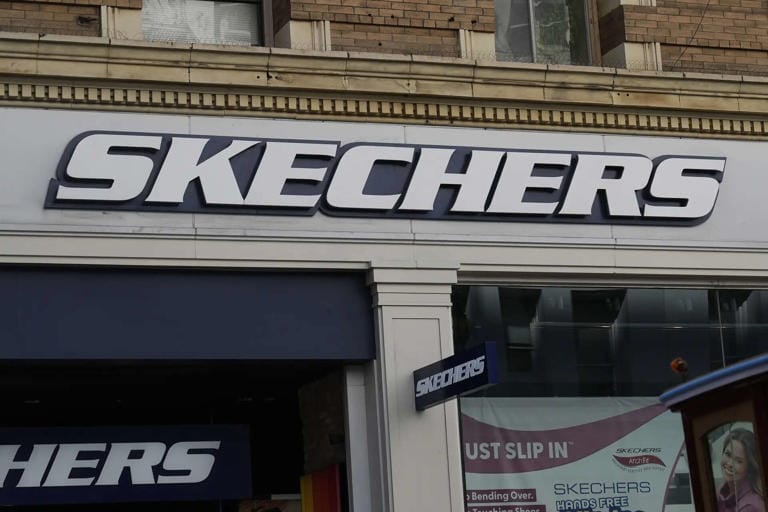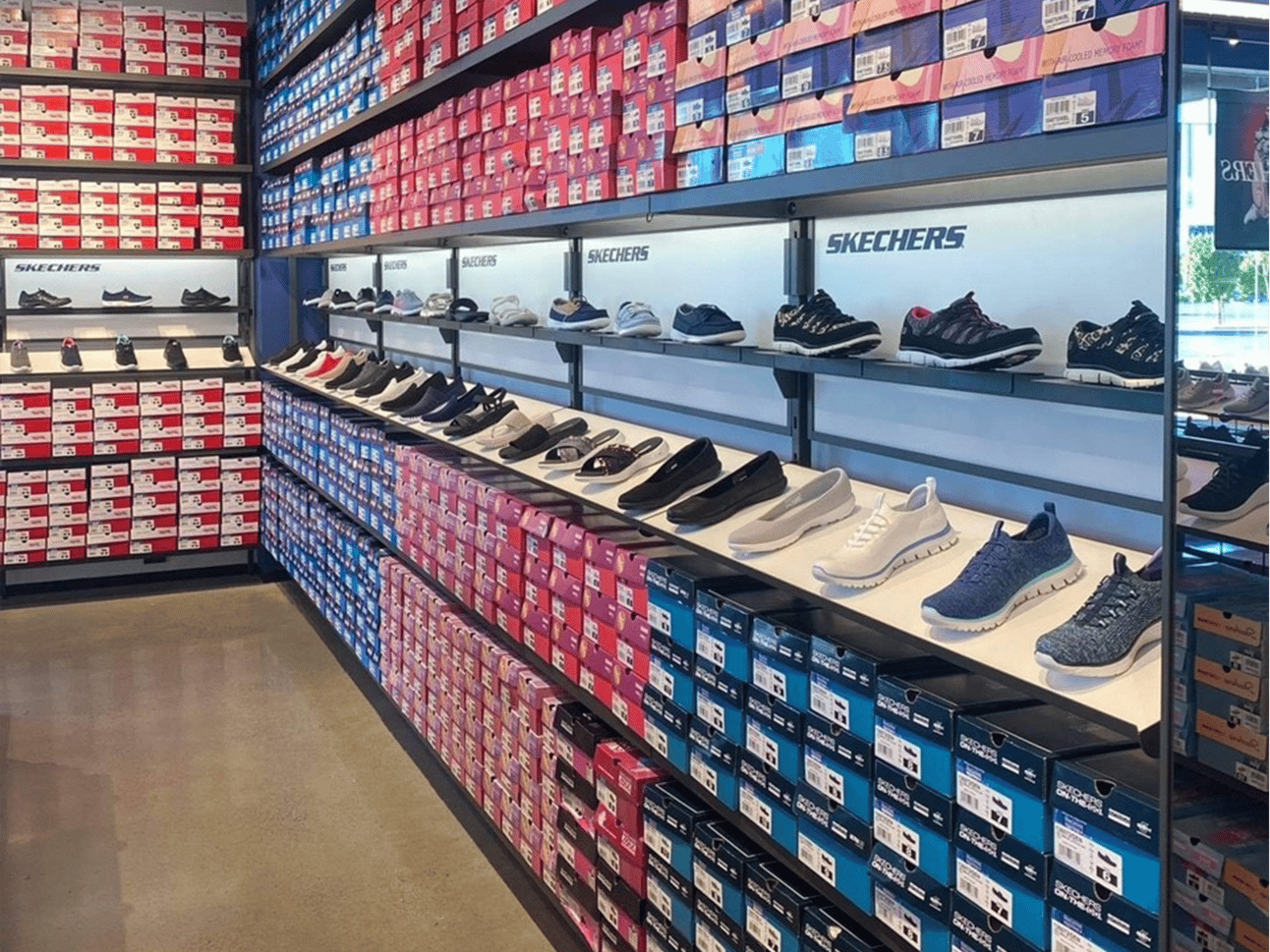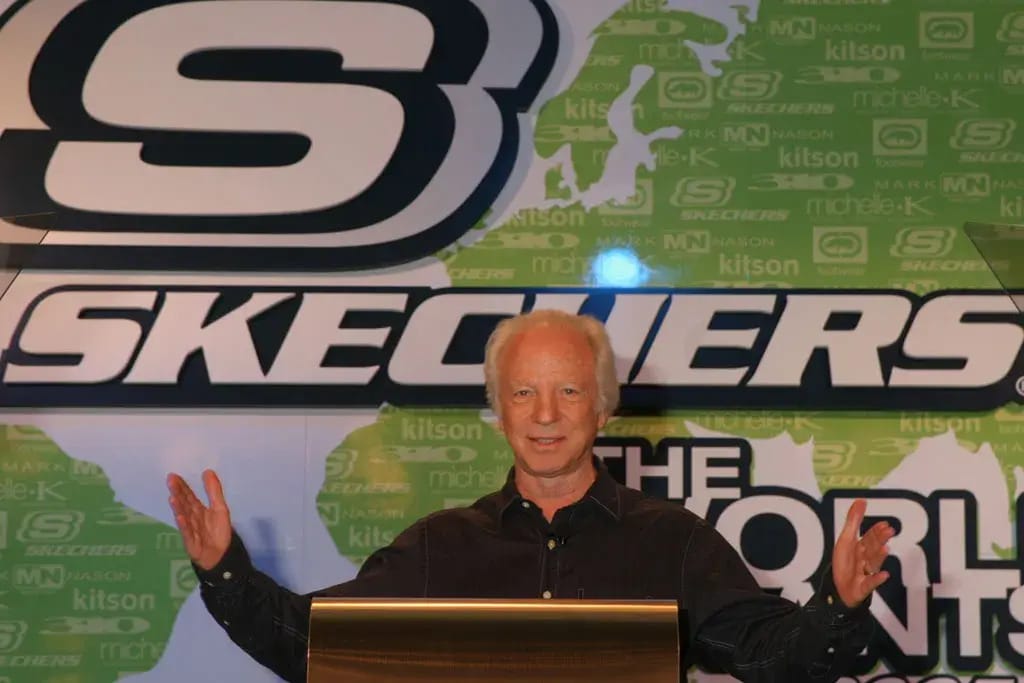- Built to Last
- Posts
- The $9 Billion Sneaker Company No One Saw Coming
The $9 Billion Sneaker Company No One Saw Coming
Skechers just sold to 3G Capital, but its real power comes from decades of disciplined, hype-free growth.

In a trade-war whirlwind, shoemaker Skechers is sold for $9 billion to become a private company
Welcome back!
This week, we’re spotlighting a brand that rarely gets the spotlight, Skechers. While Nike and Adidas battled it out in the sneaker wars, Skechers quietly became a global footwear powerhouse with over $8 billion in annual revenue. And now, in a major move, they’re set to go private in a $9.42 billion acquisition led by 3G Capital. This deal could reshape how the brand grows, markets, and positions itself moving forward.
But behind the headlines is a story about longevity, discipline, and building a business without chasing trends. From its scrappy beginnings in the ’90s to today’s massive portfolio of lifestyle, comfort, and performance shoes, Skechers has always played a different game and that’s exactly what we’re digging into this week. We'll explore how they built a brand that lasts, what this new deal might mean, and what modern founders can take away from a company that’s been underestimated for decades.
How Skechers Stepped Into the Game
Skechers was founded in 1992 by Robert Greenberg who, notably, had just been ousted from L.A. Gear, the company he also founded. Rather than walk away from the shoe business, Greenberg doubled down. He launched Skechers as a rugged streetwear brand aimed at men, debuting with chunky utility boots during a time when grunge was peaking and urban fashion was shifting. What started as a niche offering grew quickly thanks to clever retail partnerships, licensing deals, and early celebrity endorsements. The brand expanded into skate-inspired silhouettes, casual sneakers, and lifestyle shoes all while avoiding high fashion and performance competition.
Unlike Nike, which leaned on athletic prestige and aspirational marketing, Skechers focused on value, comfort, and availability. You didn’t need to line up to get a pair. They were in malls, big-box stores, and on TV, with an approachable image and mass-market appeal. In 1999, Skechers went public and began scaling globally eventually selling in over 170 countries. From work boots to memory foam walking shoes, their strategy was clear: serve the everyday consumer others weren’t speaking to.

Sketchers Modern Shoe Selection
What’s New — Skechers & 3G Capital Deal
In May 2025, Skechers agreed to be acquired by private investment firm 3G Capital for $63 per share in cash, valuing the company at approximately $9.4 billion. A roughly 30% premium over its 15-day volume-weighted average price. Skechers shareholders were also offered an optional mixed consideration: $57 cash plus equity in the new private company. The deal received unanimous board approval and is expected to close in the third quarter of 2025. Following the announcement, Skechers’ stock surged about 25% in a single day.
The backdrop to this move includes public concern over trade tensions and rising tariffs impacting footwear manufacturing in Asia, which weakened Skechers’ stock and made long-term growth less predictable under public market pressures. 3G Capital, known for its owner-operator approach, intends to keep CEO Robert Greenberg, his son Michael, and the existing team at the helm after privatization. The brand plans to remain headquartered in Manhattan Beach, California, continuing its global expansion, direct-to-consumer focus, and innovation in product, technology, and distribution.
Meanwhile, a shareholder lawsuit has emerged, alleging that minority investors were “deprived of any legitimate bidding process” and raises concerns over whether the deal offered full transparency and fairness.
Challenges & Turning Points
Skechers has always operated in the shadow of giants. Nike, Adidas, Puma. Yet, they’ve managed to carve out their space by staying in their own lane. That doesn’t mean the ride has been smooth. In the early 2000s, Skechers was often dismissed as a “cheap knockoff” brand, and despite its growing revenue, it faced perception issues around quality and design. The company doubled down on comfort, introducing memory foam insoles in 2011, which helped redefine its product line and attract older, wellness-conscious buyers. Skechers also weathered intense tariff pressure due to heavy reliance on Asian manufacturing, which made profitability vulnerable to global politics. Direct-to-consumer competition rose sharply in the 2010s, forcing the company to invest heavily in e-commerce and proprietary retail while still managing wholesale relationships. Their entry into performance footwear, like running and golf shoes was met with skepticism, but they slowly gained credibility, even sponsoring athletes like Meb Keflezighi. Brand identity remained a slow-build challenge: they weren’t flashy, trendy, or elite. But in a category dominated by hype, that turned out to be a long-term strength.
Now, the biggest challenge is also the biggest opportunity: going private. With 3G Capital behind them, Skechers will be shielded from the quarterly earnings pressures that have long shaped its decision-making. This could unlock slower, more strategic growth initiatives without the pressure of pleasing analysts or short-term investors. It also raises the stakes: can a legacy brand known for slow-and-steady execution shift gears into long-term innovation while protecting its working-class, comfort-first roots?
Core Lesson: Staying Power Comes From Focus
Skechers has built an $8 billion brand by doing something very few companies can pull off: ignoring the noise. While the sneaker industry became a race for endorsements, hype drops, resale markets, and fashion relevance, Skechers focused on everyday wearers, people who prioritize comfort, function, and price. They didn’t chase collabs, celebrity culture, or luxury positioning. Instead, they built a wide product range, solid margins, and a distribution engine that got shoes into millions of hands without ever needing a waitlist or resale app. That brand discipline helped them thrive during economic downturns, stay profitable through trade wars, and grow steadily in underserved categories like walking, work, and casual performance.
Now, with 3G Capital taking Skechers private, the company is betting that its strategy isn’t broken, it just needs breathing room. Founder-led companies tend to play longer games. And without quarterly reports looming, Skechers can invest more deeply in design, DTC tech, and global scale on their own timeline. In a world obsessed with disruption, Skechers shows what can happen when you build methodically, ignore the hype, and scale with patience. That’s not just surviving, it’s winning slowly.

Robert Greenberg - Founder of Sketchers
“Over the last three decades, Skechers has experienced tremendous growth… our success has been due to our commitment to excellence and innovation across the entire Skechers organization
Takeaways for Builders
You don’t have to follow the trend to win. Skechers succeeded by doubling down on middle-market comfort while others chased hype.
Founders with focus outperform flash. Robert Greenberg’s steady leadership proves the value of long-term vision, even when it’s not sexy.
Going private isn’t retreat—it can be a strategic reset. Without Wall Street pressure, you can invest in infrastructure, innovation, and brand-building with more freedom.
Brand discipline compounds. When you commit to who you serve (and who you don’t), trust and loyalty follow.
Mass appeal is powerful. While luxury gets headlines, serving 100 million people quietly can be just as iconic.
Built To Last Community
Built to Last is for founders and operators who aim to build more than just a product. We’re read by founders who want a cultural presence, legacy, and enduring company. If you know anyone who feels this way, please consider forwarding this to them, it would mean the world to us as we grow this community.
Thanks for being part of the journey,
— The Built to Last Team